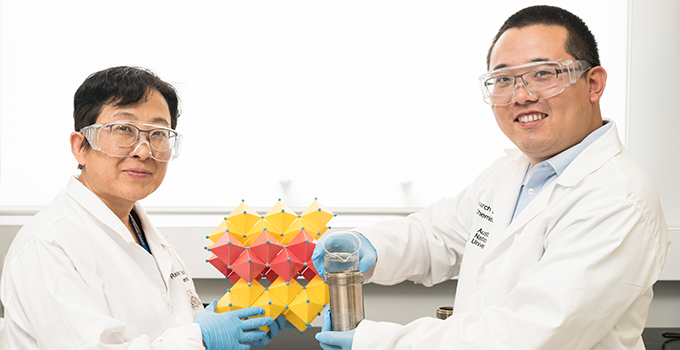Cleaning Wastewater through Utilizing Solar Energy

Fresh and clean water is becoming a scarce resource due to the multiple impacts of worldwide urbanization, industrialization, or growing global population. Ensuring universal access to fresh water is therefore an emergent issue of growing urgency.
Qingbo Sun from the Research School of Chemistry at the ANU is now trying to find an efficient route to solve this problem by developing new visible light catalysts. Three and a half years ago, Sun came to ANU from China to complete his PhD study. Working with his supervisor Professor. Yun Liu, he is engaged in the development of new materials to clean wastewater by directly utilizing renewable solar energy. Together, the two have designed new TiO2 based visible light catalysts and demonstrated that this new photocatalyst has the potential to treat wastewater in a far more efficient manner than the current commercialized leading product.
"At present, wastewater can be found everywhere, especially in the countries with high population density.” Qingbo said. “We wanted to find a good way to recycle it -- to turn wastewater into fresh and clean water.”
Qingbo and his team tried to solve the pollution problem of water by using the most commonly available natural resource – the Sun.
“Scientists all over the world are investigating a new and good photocatalysts that can directly use sunlight since solar energy is free, clean and renewable. This is also why we want to utilize sunlight to treat wastewater. Luckily, we've achieved our designed visible light catalyst.”
Qingbo has developed a TiO2 based photocatalyst that has the capacity to absorb visible light and then treats wastewater through complicated chemical reaction processes.
“The principle is quite complicated,” Sun explains. “This material firstly absorbs sunlight, especially visible light since it almost occupies 45% of the total solar energy. The absorbed sunlight is subsequently to activate the generation and separation of electron-hole pairs. Once these photo-excited carriers migrates to material surfaces, they will react with pollutants in wastewater.”
“We finally obtain clean water once organic pollutants are decomposed into H2O and CO2.”
Though this photocatalytic technique and mechanism were known about a half century ago, the challenge has been to be able to utilize solar energy to clean waste water in a high efficient manner. This is what Qingbo has focused on during his PhD.
“In this field, there are many researchers. The major problem is a lower efficiency, for example, longer reaction time is required to decompose pollutants or a small percentage of sunlight can be used.”
“The light absorption of our new TiO2 based visible light catalysts covers the whole visible light regime of solar spectrum. When we used these photocatalysts to decompose one type of model pollutant in water, only about 20 minutes are required, very high efficiency.”
Now, Qingbo and his supervisor are searching for potential partners to produce their new TiO2 based visible light catalysts at a large scale.
“We are now searching for industrial partners to bring our new products into the market as soon as possible. We are now also developing other applications of this new photocatalyst, for example, in the self-degradation of plastics, air cleaning and others.”
Qingbo and his team are expecting to be able to build up a collaboration soon to expand their research enterprise. When they manage to produce this highly efficient visible light catalyst at a large scale, it will become an essential ingredient in fixing many of water issues facing our world today.
